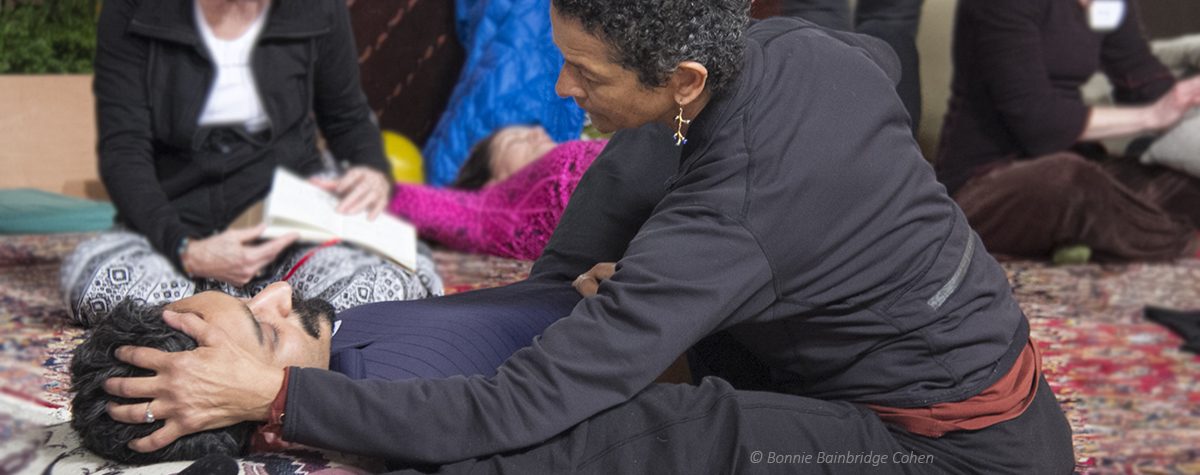
© Bonnie Bainbridge Cohen
COMMUNITY QUESTION
What are your thoughts about spasticity?
BONNIE
Spasticity is due to blockage of information coming down from the motor cortex of the brain to the spastic muscles. The obstruction can be in the motor cortex itself, in lower brain centers, or in the spinal cord – anywhere in the central nervous system (CNS).
In contrast, if the obstruction is in the peripheral nerves, there will be flaccidity or diminished muscle contraction in the involved muscles. There will not be spasticity.
However, when an injury to the CNS occurs, initially there may be flaccidity in the affected muscles due to a total shutdown in the neural circuitry. With time, spasticity can then develop as some of the nerves recover but the pathway between the brain and the affected muscles is disturbed.
We know that information from one side of the brain travels to and controls the other side of the body. If the injury occurs on the right side of the brain, the left side of the body will be affected; if the injury occurs on the left side of the brain, the right side of the body will be affected.
A phenomenon I have experienced and witnessed that is not traditionally recognized, is while information from one side of the brain travels to the opposite side of the body, information from the cells on one side of the body travel to the brain half on the same side of the body. This information may be traveling through both the blood and the nerves. The blood supply is direct on each side of the body and not all nerves cross to the opposite side.
I perceive the nervous system as a recording system, recording the activity of the cells and integrating them into total patterns of behavior. Where there is a disruption in our basic patterns of function, it can be helpful to return to the cells for new information. Cellular breathing, awareness, and initiation of movement and touch is a foundational embodiment practice in Body-Mind Centering®.
The following is a brief description of a deep practice:
One of the ways cellular consciousness can be applied is in regards to spasticity due to CNS injury. For example:
-
- From the brain’s perspective, when someone has a stroke on the right side of the brain, the muscles on the left side of the body may become spastic, often more in the arm than the leg.
- From the cellular perspective, the information on the right side of the body (unaffected side) sends information to the right side of the brain (affected side), and the cellular information on the left side of the body (affected side) sends information to the left side of the brain (unaffected side).
- Through cellular touch and movement:
- We can begin to work with cellular breathing and micromovements in the right leg (unaffected side) to send new information to the right side of the brain (affected side).
- Then work with the left leg (affected side) to send new information to the left side of the brain (unaffected side).
- Then work with the right arm (unaffected side) to send new information to the right side of the brain (affected side).
- Then work with the left arm (affected side) to send new information to the left side of the brain (unaffected side).
- Gradually we can explore other principles and approaches from different body systems and development processes to see if we can help reduce spasticity and restricted functional movement.